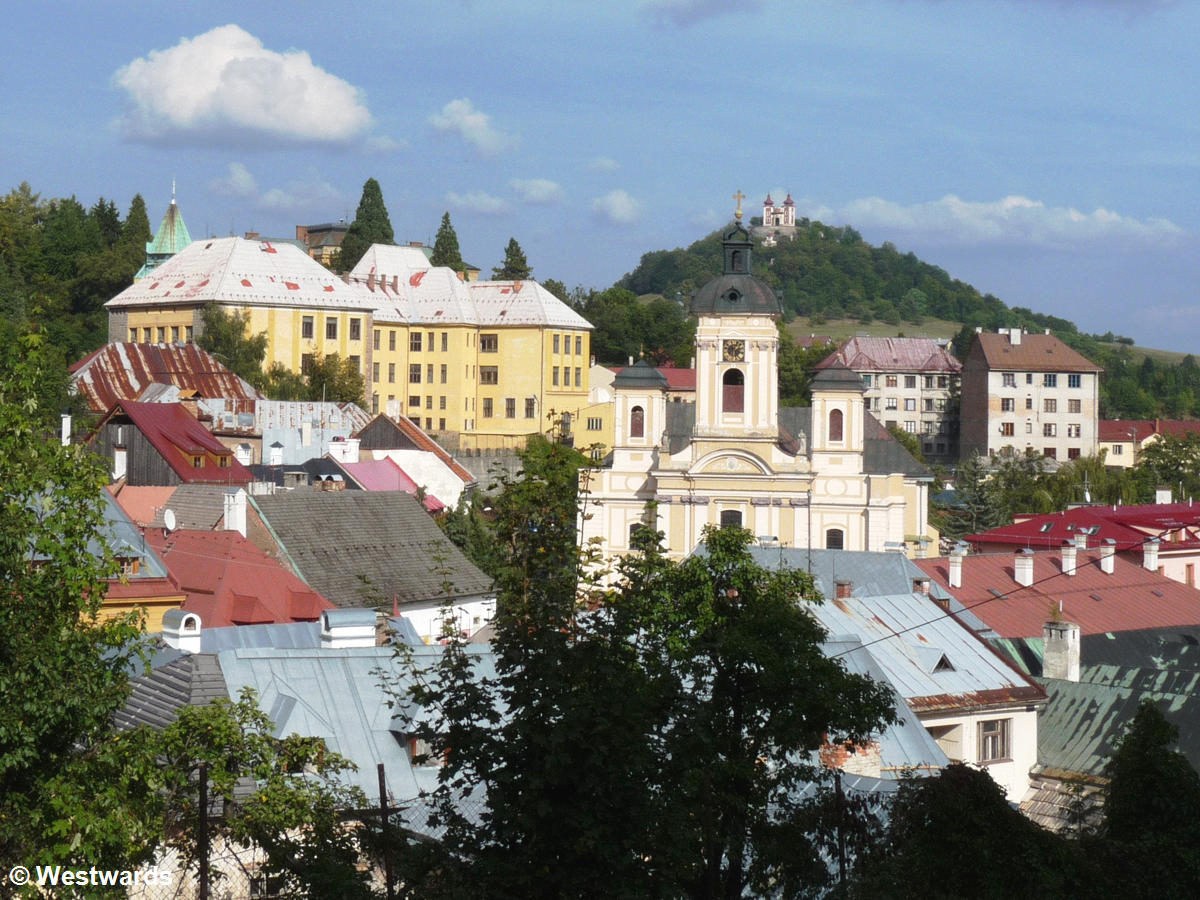
“Tsään Minuten, Nikht Rrräden!,”(Ten minutes – and don’t speak!) barks the gaunt woman in a white medical coat who brought us here, and obediently, we barely dare to whisper or move for the next ten minutes. Nearly all the staff in the Slovak spa of Pieštani speak German, for the benefit of those German and Austrian patients coming for a week or more to cure their rheumatism or arthritis. They have made up the majority of visitors since the thermal springs – which had been known since the 12th century – were turned into a fashionable spa in the 19th century. The dark volcanic mud scooped up from the river Váh was found to have healing qualities. Even Austrian Empress Elisabeth (Sissi) came here to take healthy mud baths.

A man breaking his crutches

A strong young man triumphantly breaking his crutch became the emblem of the whole town.
In the 1920s the popularity of the spa reached another peak, with European entertainment stars and Indian maharajas visiting, but WWII set an end to that and turned Pieštany into just another sanatorium. With the political opening of Eastern Europe, the health resort apparently regained some of its former splendour. The tall Balnea Palace Hotel and the Irma Spa with its rotund bathing hall, plus some lesser resorts, vie for guests from abroad. Today, the institution displays a quirky mix of Soviet and K.u.K. retro-styles.
At the end of the mud bathing session, we are administered a strict twenty-minute rest, rolled into white linen sheets in a semi-darkened hall smelling of a great history and, yes, volcanic mud.

Vlkolinec and Banska Stiavnica
Thus strengthened, we take on Slovakia. In the next few days, we visit medieval castles and Renaissance marketplaces. In Vlkolinec we stroll through a wooden village that the industrial revolution would seem to have bypassed, were it not for the two Japanese cars parked in front of bonbon-coloured blockhouses and the UNESCO World heritage sign.

A tall house in Banska Bystrica, we learn, used to house the trading office of the rich Fugger family, where double-entry accounting was used for the first time ever. In Banska Štiavnica we visit the old silver mine that once made this mountainous area in one of the backwaters of Europe rich enough to build several pompous churches and administration palaces. Not to mention a huge plague column.



